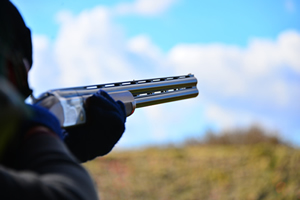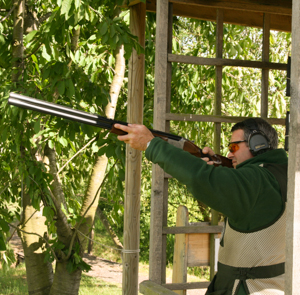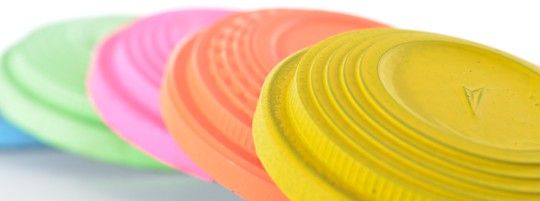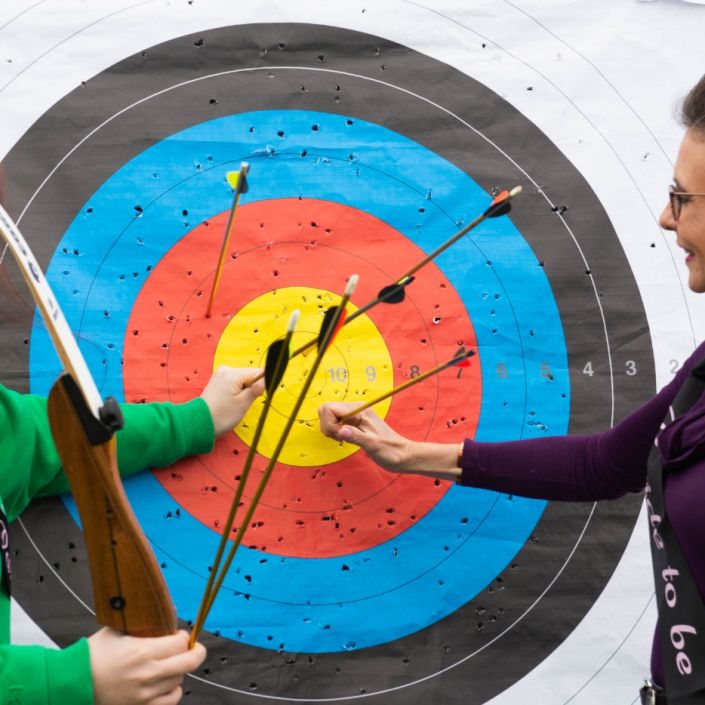Clay pigeon shooting has been a popular event here in Warwick for over 100 years. Originally invented as a way to refine the shooting skills of huntsman, clay pigeons are so-called because they replace the pigeon (as well as the grouse and pheasant) which were, and still are, shot for sport.
Clay pigeon shooting is a great sport for people aged 14 and over. It's easy to get into and simple to learn. Here at Adventure Sports it's a particularly popular activity for team building events and stag weekends.

To help you fully enjoy your experience we have fully-trained instructors who guide and tutor you to your best shot. It doesn't take people long to grasp the basics, but here's our little guide to get you started:
1) Find your dominant eye
Using your dominant eye helps you to hit the target. Simple. Our eyes send signals from both sides to the brain and allow us to judge the distances and speed of moving objects. In shooting you need to trust your dominant eye as the non-dominant eye won't give you the correct line of fire.
Remember: your dominant eye isn't always the same side as your dominant hand.
To find your dominant eye, point at an object in a room so that it looks like it's on the end of your finger (it doesn't have to be far away.) Then close your left eye. If the object is still on the end of your finger then your right eye is your dominant eye. If it isn't then your left eye is your dominant eye.
2) Get the right stance
The right stance or standing position is the best way to set yourself up as a good, balanced shooter. Your body will swing with the clay as it leaves the trap, so it's very important that you're balanced so you have the best chance to keep up and shoot the clay.
Choosing your footing is important. You need to be at balanced at the point of pulling the trigger. Your leading foot should point towards the area that you're shooting. Your leading foot is always the opposite to your shooting hand (left foot for right hand shooters and right foot for left hand shooters). You should have your feet a shoulder's width apart and have a little more of your weight on your leading foot.
3) Mount the gun correctly

Mounting the gun correctly is crucial for your comfort so that you're balanced, and so that the gun doesn't kick back when fired. The ideal position is for the 'butt' of the gun (that's the wooden part at the opposite end of the dangerous bit) is rested in the groove of your shoulder joint. If you point forwards and then feel the groove between your shoulder and your chest you'll find the groove.
Then you need to pull your head into the gun. This may sound dangerous, but by fitting the gun snuggly into your body it won't kick back when you fire it. Placing your cheek on the side of the gun will ensure a good shot as well as stopping the gun smacking you in the side of the face!
4) Find your sweet spot
When your shooting it's very tempting to look where the clay is coming from. If you do you'll be chasing the clay the whole time. The trick is to find out where your eye first sees the clay and set your stance and aim slightly ahead of it. Learn the movement of the clay (you'll get a test run) and see how it flies, then follow the arch of the clay with your gun.
5) Shoot ahead of the clay – don't chase the clay
A common beginner's error is to aim at the clay as that's the obvious thing to do, right? But the trick is to aim slightly ahead of the clay to allow the cartridge time to leave the barrel and fly towards the area you've shot at. You'll be surprised how a little adjustment aiming ahead of the clay will improve your hit rate.
Aiming ahead can also mean aiming below if you're shooting from a trap that launches the clay high, making it drop suddenly. Learn the route and direction of the clay and try to fix a point that's comfortable.
6) Keep the gun moving after you hit the clay
Following through is important. Just as with throwing a ball or swinging a tennis racket, what you do after the shot is just as important as what you do before and during. By setting your movement to continue after the target is hit you give yourself a nice, smooth movement and this gives more control over the rifle and shot.
Want MORE information - no problem! Have a look through a detailed guide to clay shooting.
Clay pigeon shooting in Warwickshire
So there you go. It is very easy for people of all abilities to enjoy shooting clays. All you need is a good eye, a steady stance and the ability to listen to our expert instructors.
Shooters as young as 14 can take part in clay shooting, but small children will find a shotgun heavy. Lighter guns are available so just ask when you make your booking.
Adventure Sports have many regular shooting events as well as the clay shooting packages for corporate events, team building and activity days. We're one of the Midlands' best-attended grounds and regular clay shooters are welcomed to our open shoots.
If you need any more advice or have any questions then just call (01926 491 948) or you can book online.



